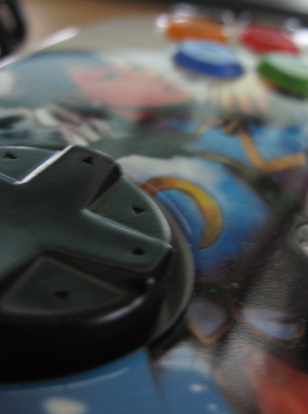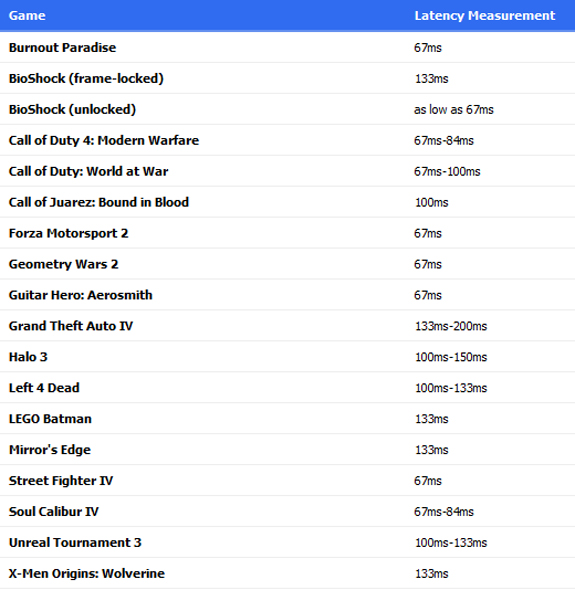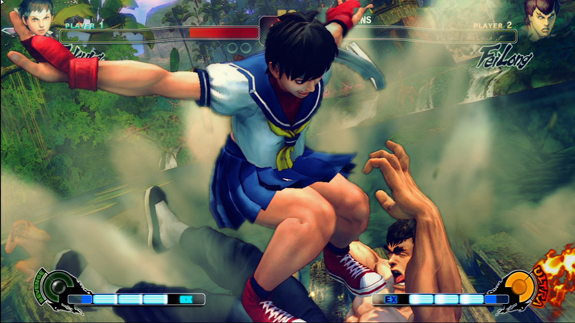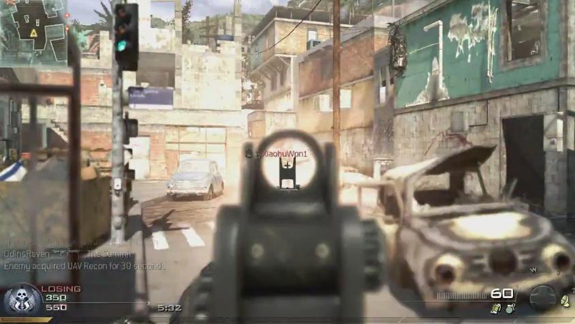This post has not been edited by the GamesBeat staff. Opinions by GamesBeat community writers do not necessarily reflect those of the staff.

Editor’s note: I’ve always wondered why the controls of some games feel better than others. This piece from Daniel sheds light on it. I’m not surprised of the emphasis on controls that go into racing games — you need tight, responsive controls to get a piece of speeding steel around a track. -Jason
Control responsiveness is an obscure but interesting subject in games. You can definitely feel it and how it affects different games, but it’s never been truly analyzed — until recently.
How fast a character reacts to your button inputs is something some developers get and others don’t. The issue is so far in the background that many gamers probably dismiss it. Sometimes a critic says a game has really tight controls but doesn’t specify what they mean about it. I think it makes the difference between a visceral game and one that’s just pretending to be.
The best recent example is probably the difference between a Super Mario game and LittleBigPlanet. For all its achievements in networking and level design, LittleBigPlanet’s main flaw is its loose, sluggish controls — it just doesn’t handle as a 2D platformer should. One of the reasons people love Mario is because Nintendo always makes sure that the games’ controls as are responsive as possible — Mario is simply a fun game to control.
Just recently BioWare stated intent to capture Modern Warfare fans by tightening Mass Effect 2’s controls to better resemble a shooter (something the first Mass Effect didn’t do). Cosmetically, BioWare may get that down, but will the game feel right to shooter fans?
“When it comes to the shooter quality of the game, there are things that a really experienced shooter fan is looking for,” ME2 project director Casey Hudson told Kotaku. “The feel, the precision — things like that. So we made sure those things are there as well.”
Being a developer of role-playing games, can BioWare really nail that feel and precision? It’s the same problem every RPG developer faces when making an action-RPG — actually making it handle like an action game.

Muramasa The Demon Blade came really close to nailing that action-RPG precision, but I found something about its controls that made me say, “Close, but not quite.” The placement of the jump command on the D-pad instead of a face button irked me.
It’s funny BioWare mentions Modern Warfare 2. As it turns out, Infinity Ward’s reputation for making the best shooter controls for console games is well deserved.
Last September DigitalFoundry over at Eurogamer wrote about analyzing controller lag in console games and how some developers place real importance doing this. They wanted to specifically record how fast games reacted to controllers, which games reacted the fastest, and why. They found clear patterns and identified some games that just didn’t get it.
DigitalFoundry quickly came upon some rules regarding controller lag. The main thing that affects it is framerate; in many cases framerate and controller lag are one in the same. But another significant factor is simply the tightness of the game’s coding.
They found that right now, the fastest a console game can possibly respond is 50 milliseconds (three frames) between the time the player presses a button and the time he sees a reaction onscreen. The PS3’s Xross Media Bar responds at that speed, but few games do. Most games running at 60 frames per second respond in 66ms, and most 30fps games respond at between 100ms and 130ms. At 150ms, players start to really notice unresponsiveness. Playing on an LCD display also adds a little bit of lag.
Now, before reading on, I want you to guess which genres of console games typically have the most responsive controls.

(Image from DigitalFoundry at Eurogamer.com)
Looking at the chart reveals a clear but also slightly surprising trend. It turns out that the most responsive controls are in racers, music games, and fighting games. The surprise is that console shooters, a genre all about quick action, actually have some of the least responsive controls on consoles.
Most shooters on consoles these days run at 30fps and are thus limited to between a 100ms and 133ms response lag. According to DigitalFoundry, Grand Theft Auto 4 and KillZone 2 — a game criticized for its controls — both had issues, with response in the former getting as slow as 200ms. Guess which game stood out with the most responsive controls among shooters? Yep, Modern Warfare 2.
Infinity Ward is one of the developers contacted by DigitalFoundry, and the COD developer stressed a priority to get their games not only running at 60fps (even on PS3) but responding promptly as well. That’s probably why both Modern Warfare games run at the sub-HD 600p resolution on consoles.

Fighting games and character-action games are another area of importance. Street Fighter 4 and Soul Calibur 4 were among the most responsive games DigitalFoundry measured, and I’d imagine seasoned developers in the genre take that part seriously.
One of the reasons people love playing Street Fighter is because of that visceral nature — the characters, like Mario, just feel right. The case with Bayonetta is probably similar when compared to fare like Darksiders. I also imagine it’s one of the things a lot of Western developers don’t quite catch when they try to ape the genre.
I think Ninja Gaiden creator Tomonobu Itagaki put it best when he said that when you press a button, your character needs to respond as quickly as possible. That philosophy in regard to input and output perfectly fits a franchise like Ninja Gaiden.
Heavenly Sword, according to DigitalFoundry, actually became as sluggish as 300ms from actions as simple as turning the character. I imagine that every God of War game runs at 60fps has something to do with it being the best combo action franchise developed in the West.

One thing that seems to be at odds with control responsiveness is character animation. I’ve always noticed that in the quickest games like Call of Duty, or even most recently Bayonetta, have no real sense of transition between animations. The characters just flip from doing one thing to the other to accommodate the player’s immediate demands.
The most famous outliers recently have been the Uncharted games. Nathan Drake has true flow between running, jumping, changing directions, etc. That undoubtedly has an effect, however, on how smooth controlling him feels to the player. This is apparently Famitsu’s main issue in their review of Uncharted 2.
With most of Japanese gaming stemming from the arcades, where input must be polished, controller response is probably a big priority for Japanese gamers and developers — even at the expense of smooth character animation. My theory for why this might not be so in the West is because most of Western development stems from the PC, where higher framerates make control lag a nonissue. Many Western developers might not know that you really have to code for responsive controls on consoles.
So far, when critiquing a game’s controls, all we’ve been able to do is note the difference between responsive and unresponsive controls when a game is especially responsive or especially unresponsive. Until now few attempts have really been made to measure that difference we all feel.
Is it even that important? DigitalFoundry asserts that control lag is at least as important as framerate in a game and that reviewers should not it right alongside framerate. Does it matter that much to you?